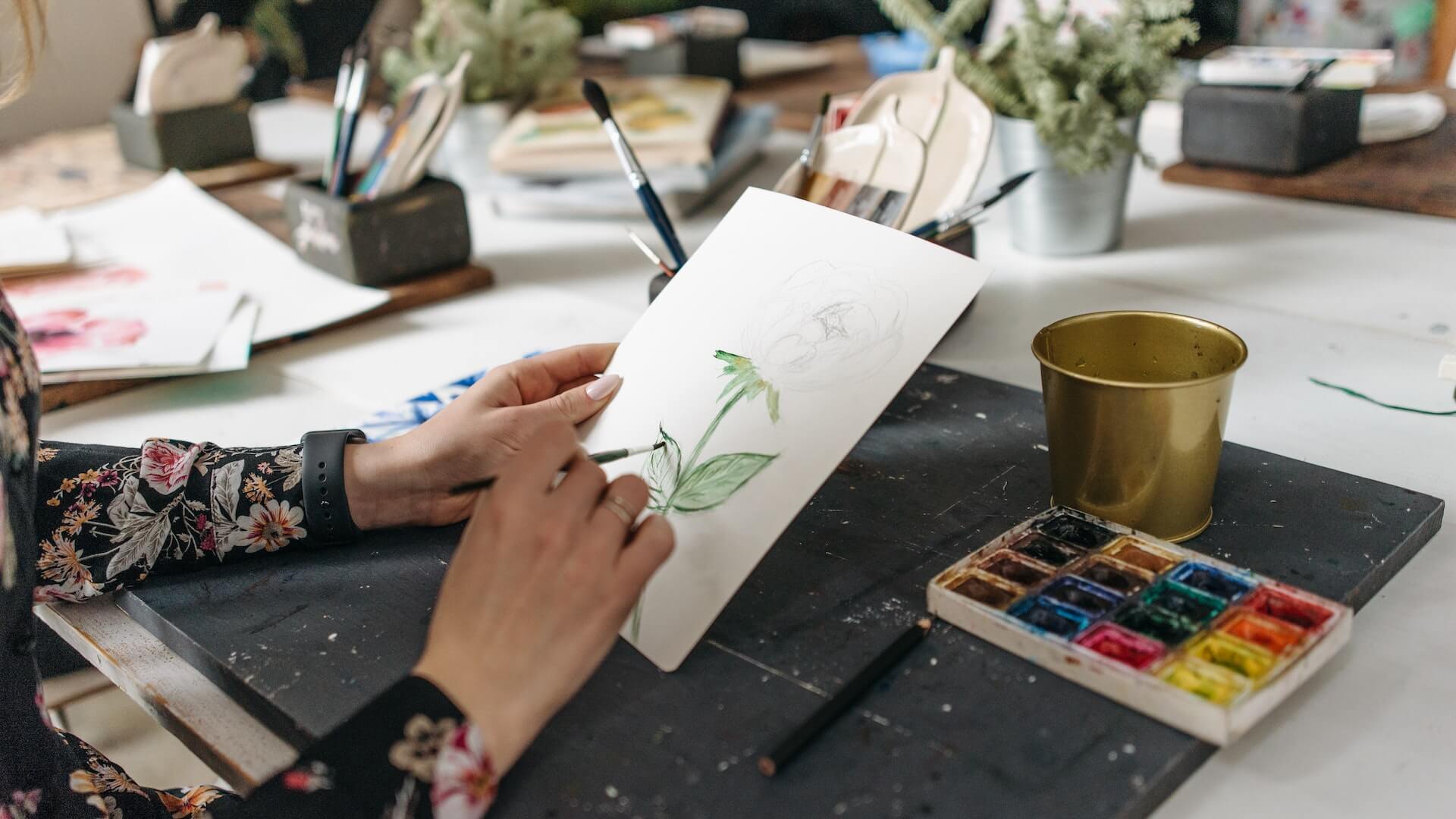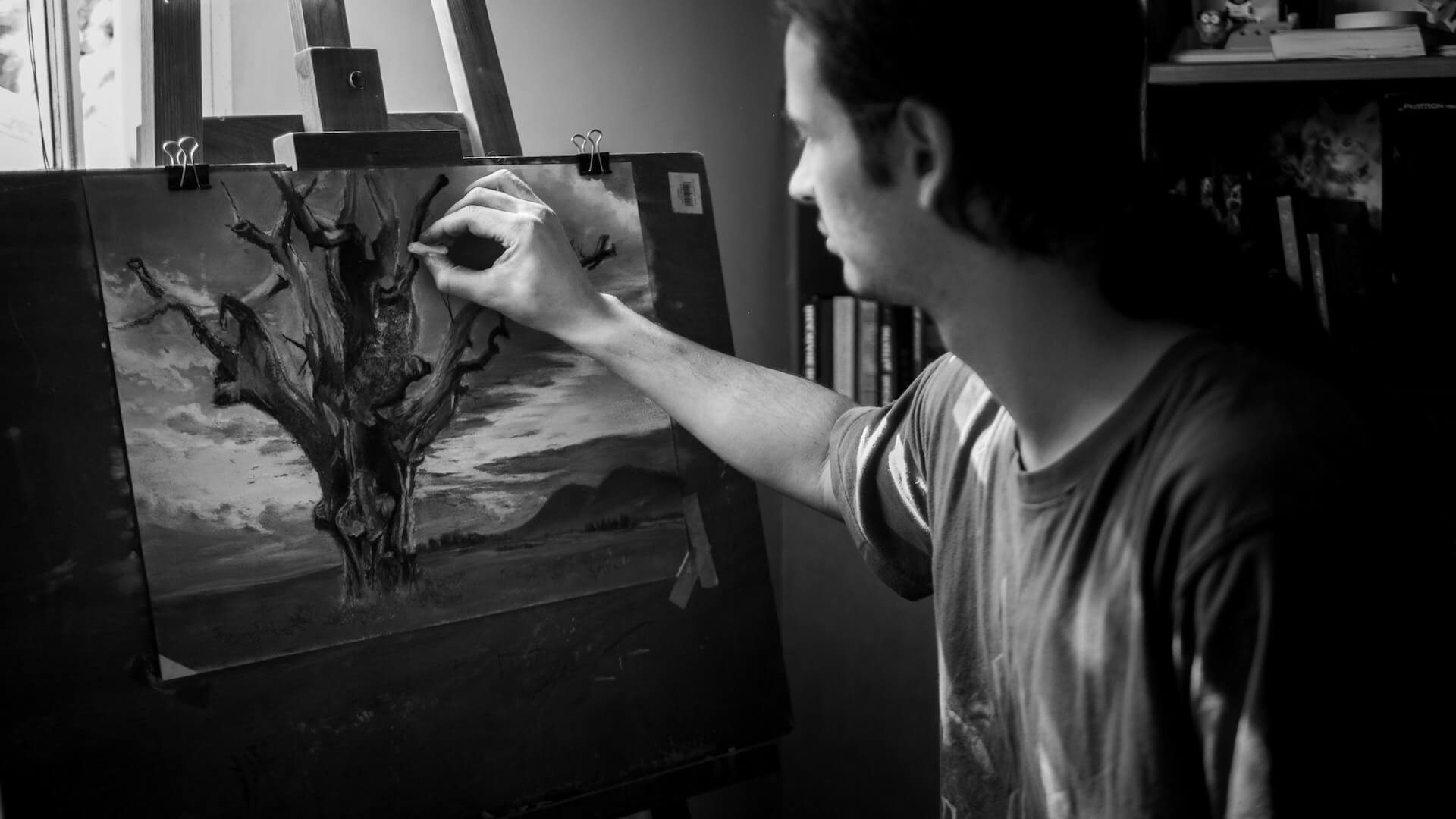Drawing is one of the most basic forms of artistic expression and has been around since the dawn of human history. It is a powerful tool that can help you express your thoughts, emotions, and ideas in a visual way. However, many people think that they are not creative enough to draw, or that it is too difficult to learn. The truth is that anyone can learn to draw and unleash their creativity with the right tools and mindset. In this post, we will explore the art of drawing and how it can help you unlock your creativity. We will look at the benefits of drawing, the different techniques and materials you can use, and how to get started with drawing. Whether you are a beginner or an experienced artist, this post will provide you with the inspiration and guidance you need to start exploring your creative potential through drawing.
Understanding the benefits of drawing for unlocking creativity
Drawing is not only a timeless form of artistic expression but also a powerful tool for unlocking creativity. The benefits of drawing go beyond the creation of visually stunning artwork; it stimulates the mind, fosters imagination, and enhances problem-solving skills.

When you engage in drawing, you are actively using both the left and right hemispheres of your brain. The left hemisphere, responsible for logic and analytical thinking, is engaged in observing proportions, angles, and shapes, while the right hemisphere, associated with creativity and intuition, guides your imagination and interpretation.
Drawing allows you to explore your thoughts and ideas visually, providing an outlet for self-expression. It enables you to communicate concepts and emotions that may be difficult to put into words. Through the act of drawing, you can tap into your subconscious, accessing a wellspring of inspiration and ideas that may have been hidden from your conscious mind.
Additionally, drawing helps improve your observation skills. As you keenly observe details and nuances of the subjects you draw, you develop a heightened awareness of the world around you. This attentiveness translates into increased mindfulness, enabling you to find beauty and inspiration in everyday objects and experiences.
Drawing also encourages experimentation and risk-taking. It pushes you to step outside your comfort zone and explore different techniques, mediums, and styles. The process of trial and error in drawing allows you to embrace mistakes as valuable learning opportunities, fostering a growth mindset that is essential for creativity.
Moreover, drawing enhances problem-solving skills. It requires you to break down complex subjects into simpler shapes and forms, encouraging critical thinking and spatial reasoning. As you tackle various challenges in your drawings, you develop an ability to approach problems from different perspectives, finding unique solutions.
Overcoming common misconceptions about drawing
It’s time to debunk these misconceptions and unlock your creativity through the art of drawing.
Misconception 1: “I can’t draw because I lack talent.”
Contrary to popular belief, drawing is not solely about talent. It is a skill that can be learned and developed with practice. While some individuals may have a natural inclination towards drawing, anyone can improve their drawing abilities through dedication and perseverance. Like any other skill, it takes time and effort to master, but the rewards are worth it.
Misconception 2: “Drawing is only for artists.”
Drawing is not limited to professional artists or individuals pursuing a career in the arts. It is a versatile form of expression that can be enjoyed by people of all ages and backgrounds. Whether you want to capture a beautiful landscape, sketch your favorite pet, or simply doodle for relaxation, drawing offers a myriad of possibilities for self-expression and creativity.
Misconception 3: “I need expensive materials to draw.”
While high-quality art supplies can enhance the drawing experience, they are not a prerequisite for getting started. In fact, all you need to begin your journey in drawing is a pencil and a piece of paper. As you progress, you can gradually explore different mediums and materials that suit your preferences and budget. The focus should be on practicing and honing your skills rather than the equipment you use.
Misconception 4: “Drawing is only about realistic representation.”
Drawing is not solely about creating realistic portraits or reproducing exact replicas of objects. It is a form of visual communication that allows you to express your unique perspective and imagination. From abstract sketches to stylized illustrations, there are countless ways to explore and experiment with different artistic styles. Embracing your own interpretation and artistic voice is what makes drawing truly personal and rewarding.
Exploring different drawing mediums and techniques
While pencil and paper may be the traditional tools of choice, there is a vast array of mediums and techniques available that can add depth and variety to your artistic expression.

One popular medium to experiment with is charcoal. Charcoal drawings can create stunning contrasts and textures, allowing you to play with light and shadow in unique ways. The soft and smudgy nature of charcoal allows for both bold and delicate strokes, giving you the freedom to explore different styles and moods.
Another option is ink drawing, which offers its own set of challenges and rewards. With ink, you can create intricate and precise lines, resulting in highly detailed and captivating artwork. Ink also allows for experimentation with different tools, such as pens, brushes, or even unconventional items like twigs or feathers, adding an element of unpredictability and spontaneity to your work.
For those looking to add vibrant colors to their drawings, exploring mediums like colored pencils, pastels, or watercolors can open up a whole new world of possibilities. Each medium has its own unique characteristics, allowing you to create rich and immersive artwork that captures the essence of your subject matter.
Beyond experimenting with different mediums, it is equally important to explore various drawing techniques. From stippling and cross-hatching to blending and shading, each technique offers a different way to bring your drawings to life. By learning and mastering different techniques, you can add depth, dimension, and realism to your artwork, allowing you to convey emotions and tell stories through your drawings.
Nurturing the creative mindset: Cultivating curiosity and embracing mistakes
Curiosity is the fuel that drives creativity. By remaining curious, you open yourself up to new ideas, perspectives, and possibilities. Explore different art styles, techniques, and mediums that intrigue you. Experiment with various subjects and compositions. Allow yourself to be inspired by the world around you, from nature’s intricate patterns to the bustling city streets. The more you feed your curiosity, the richer your creative well becomes.
Embracing mistakes is another vital aspect of nurturing your creative mindset. Understand that making mistakes is a natural part of the creative process. Instead of being discouraged by them, view mistakes as opportunities for growth and learning. Don’t be afraid to take risks and try new things, knowing that missteps can lead to unexpected breakthroughs. Embrace imperfections and use them to push the boundaries of your artistic abilities.
Remember, creativity is not about perfection; it’s about self-expression and exploration. Allow yourself the freedom to make mistakes and learn from them. Embrace the unknown and don’t be afraid to venture outside your comfort zone.
Developing basic drawing skills: Shapes, lines, and shading techniques
Before diving into complex subjects or intricate details, it is crucial to understand the fundamental building blocks of drawing: shapes, lines, and shading techniques.

Shapes form the foundation of any drawing. They help you establish proportions and create a solid framework for your artwork. Start by practicing simple geometric shapes like circles, squares, triangles, and rectangles. As you progress, challenge yourself to combine these shapes and create more complex forms. By mastering the art of shapes, you will gain confidence in sketching various objects with accuracy.
Lines are another fundamental element in drawing. They give structure, depth, and definition to your artwork. Experiment with different types of lines – straight, curved, thin, thick – to convey different textures, contours, and emotions. Practice drawing lines in different directions, angles, and lengths to develop control and precision in your strokes. A steady hand and confident lines can bring life and energy to your drawings.
Once you have a firm grasp of shapes and lines, understanding shading techniques is crucial to add depth and dimension to your artwork. Shading involves creating variations in light and dark areas to create the illusion of form and volume. Experiment with different shading techniques like hatching, cross-hatching, stippling, and blending. By mastering these techniques, you can add realism and depth to your drawings, making them visually captivating and engaging.
Exploring composition and perspective in drawing
Composition refers to the arrangement and placement of elements within your drawing, while perspective involves creating a sense of depth and dimension.
When it comes to composition, consider the placement and balance of objects, lines, and shapes within your drawing. Think about how they interact with each other and the overall visual harmony you want to achieve. Experiment with different arrangements, such as the rule of thirds or leading lines, to create visually engaging compositions.
Perspective, on the other hand, is all about creating the illusion of three-dimensional space on a two-dimensional surface. Understanding perspective will allow you to accurately depict objects and scenes with depth and realism. Study the different types of perspective, such as one-point, two-point, and three-point perspective, and practice incorporating them into your drawings.
Finding inspiration and developing a personal style
One way to find inspiration is by observing the world around you. Take a walk in nature, visit art galleries, or simply people-watch in a bustling street. Notice the colors, shapes, and textures that catch your eye. Pay attention to the emotions and stories that these observations evoke within you. It could be the delicate petals of a flower, the vibrant hues of a sunset, or the intricate details of a building façade. By immersing yourself in these sensory experiences, you can tap into a rich source of inspiration for your drawings.

Another valuable source of inspiration is studying the works of other artists. Explore different artistic styles, periods, and techniques. Visit museums, read art books, and browse online galleries to gain exposure to a diverse range of artistic expressions. Analyze the elements that resonate with you the most – it could be the bold brushstrokes of a Impressionist painting or the intricate linework in a comic illustration. By studying the works of others, you can learn from their techniques and incorporate elements that inspire you into your own unique style.
Developing a personal style takes time and experimentation. Allow yourself to explore different mediums, subjects, and techniques without the fear of making mistakes. Take risks, push your boundaries, and embrace the imperfections that make your art truly yours. Over time, you will naturally gravitate towards certain themes, motifs, or approaches that reflect your individual artistic voice.
The role of practice and consistency in improving drawing skills
Many aspiring artists often wonder how to improve their drawing skills and unleash their creativity. The answer lies in dedicating time to regular practice and maintaining consistency.
Practice is the foundation upon which artistic skills are built. Just like any other skill, drawing improves with repetition and deliberate effort. Carving out time in your daily or weekly routine to focus on drawing will help you progress and develop your abilities. Whether it’s 15 minutes a day or a few hours each week, consistency is key.
Consistency allows you to build muscle memory and develop a deeper understanding of different techniques and styles. As you practice regularly, you will notice improvements in your hand-eye coordination, line control, shading techniques, and overall confidence in your abilities. The more you draw, the more comfortable you become with the medium and tools you use, allowing your creativity to flow more freely.
Additionally, consistency helps you overcome artistic blocks and challenges. There will be times when you feel uninspired or encounter difficulties in creating what you envision. By maintaining a consistent drawing practice, you can push through these obstacles and find inspiration in the act of drawing itself. It is through consistent practice that you can uncover new ideas, experiment with different approaches, and ultimately unlock your full creative potential.
Tips for incorporating drawing into your daily life and staying motivated
Incorporating drawing into your daily life can be a wonderful way to unlock your creativity and stay motivated.
1. Set aside dedicated time:
It’s essential to carve out specific time in your day for drawing. Whether it’s in the morning, during your lunch break, or before bed, having a consistent schedule will help you stay committed.
2. Create a designated workspace:
Having a dedicated space for your drawing materials can make it easier to jump into your creative zone. Organize your pencils, sketchbooks, and any other tools you need in a way that is easily accessible and visually inspiring.
3. Start with small goals:
It can be overwhelming to tackle a large drawing project right away. Instead, start with smaller goals, such as completing a quick sketch or doodle each day. This will help you build momentum and prevent burnout.
4. Experiment with different subjects and styles:
Don’t limit yourself to one subject or style of drawing. Explore different subjects, such as still life, landscapes, or portraits, and experiment with different techniques and mediums. This will keep your drawing practice exciting and help you discover your strengths and preferences.
5. Join a drawing community:
Surrounding yourself with like-minded individuals who share your passion for drawing can be incredibly motivating. Join local art classes or workshops, participate in online forums or social media groups, and engage with other artists. Sharing your work and receiving feedback can provide valuable inspiration and encouragement.
6. Embrace imperfection:
Remember that not every drawing has to be perfect. Embrace the imperfections and view them as opportunities for growth and learning. Allow yourself to make mistakes and enjoy the process of experimenting and improving your skills.
7. Stay inspired:
Seek inspiration from various sources, such as art books, galleries, nature, or even everyday objects. Look for beauty and creativity in your surroundings and let them fuel your imagination. Surround yourself with art that inspires you and follow artists whose work resonates with you.
Conclusion
Drawing is a powerful and accessible form of self-expression that can help you tap into your imagination and unleash your artistic potential. By following the tips and techniques we’ve shared, you can begin to explore your creativity, develop your drawing skills, and find joy in the process. So grab a pencil, let your imagination run wild, and see where your artistic journey takes you. Remember, every stroke on the paper is an opportunity to express yourself and create something truly unique. Happy drawing!



